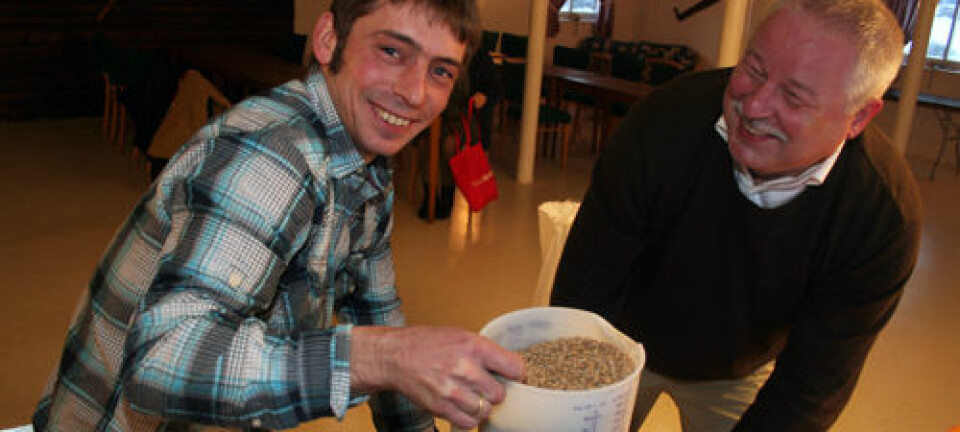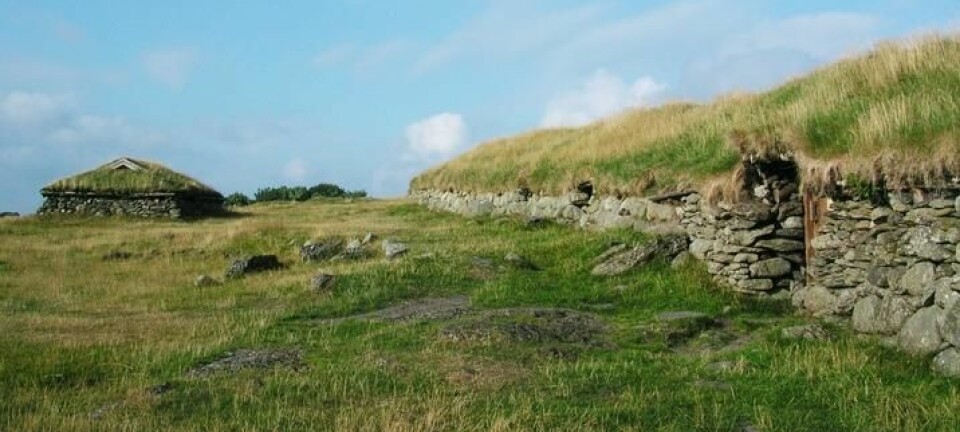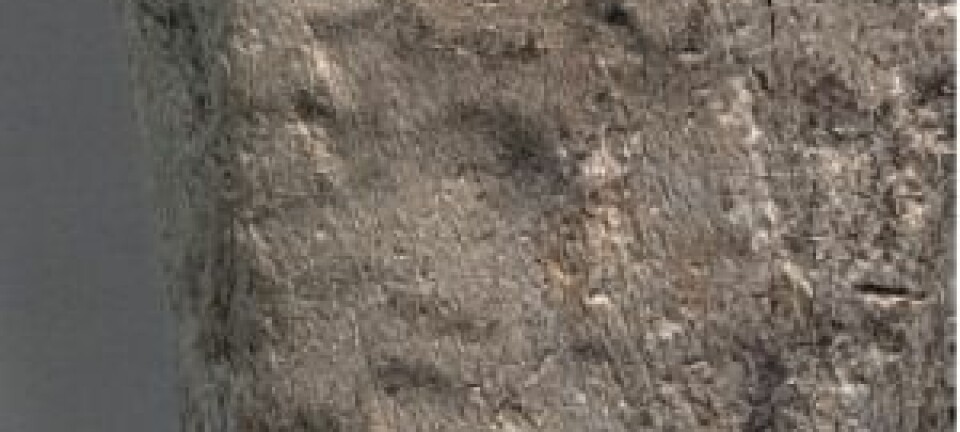This article was produced and financed by University of Stavanger

Stone Age children helped in tool production
The imperfections of a flint axe give information about Stone Age children.
Denne artikkelen er over ti år gammel og kan inneholde utdatert informasjon.
Whereas arrowheads, axes and other formal tools have traditionally received a lot of attention in research, production debris and unfinished and discarded products have been at the bottom of the archaeological hierarchy.
Much of the deposited artefacts are wing-shaped, side-edge flakes, characteristic of flake axe-production, and among the debris archaeologist Sigrid Alræk Dugstad has found is a discarded flake axe.
The production debris and the axe itself are most likely results of knapping actions performed by an inexperienced knapper.
“A succession of failed strokes, terminating in many hinge and step fractures, indicates that axe was made by a novice flintknapper, probably a child,” says Dugstad.
In the article "Early child caught knapping: A novice early Mesolithic flintknapper in southwestern Norway," she has turned upside down the hierarchy of objects from the Early Stone Age.
She refers to archaeological assemblage from an open air-site found on the island of Hundvåg in south-western Norway which she has studied.
Damaged by errors
The axe, found in an open air-site on the island of Hundvåg in south-western Norway, is not functional and has never been used. It was discarded together with about 450 flint artefacts on the site.
Both the body and the edge of the axe had been damaged by a succession of failed strokes. Finally, it had been impossible to correct the repeated errors, and the axe was thrown into the waste heap. Dugstad is of the opinion that the axe is most likely a product of a child or a young individual in a practising phase.
“The axe has probably not been produced by an adult. Errors are too numerous and striking to have been performed by a skilled and experienced flintknapper. This is probably a child's work,” says Dugstad.
According to the archaeologist, a skilled knapper will also make mistakes, and does not always reveal maximum proficiency, but he or she will be able to correct inevitable mistakes as they occur without compromising the outcome.
“In this case, one can see that the axe was made by a person with poorly developed theoretical knowledge and motoric skills. Given the numerous and characteristic failed strokes, it is also probable that the beginner had not received any form of direct instructions on how to proceed in manufacturing the tool. Maybe the purpose was to practise the technique in itself rather than produce a finished tool,” Dugstad says.
Investigating the Stone Age settlement
In France, especially since the beginning of the 1990s, some very demanding investigations of Stone Age settlements have been carried out. Research on flaked stone tools and production debris has shown that it is possible to reveal the work and the movements of the individuals.
These case studies show that debris from tool production is ideal as a starting point for distinguishing between different levels of skill among flint knappers and thus also the playing and imitations by children.
In Norway, new excavation methods over the past ten years and influence, especially from French and Danish research, have provided opportunities and increased interest in learning more about individual flintknappers.
“It is obvious that children must have been an important part of everyday life in Stone Age settlements. The contrast between the number of children who have lived, and the lack of ability to perceive and define them in the archaeological material is striking,” Dugstad says.
Not necessary miniature tools
In the Early Mesolithic there seems to have been good access to flint in Western Norway. Norwegian bedrock does not contain flint, but flint stones frozen in drift ice were brought here by ocean current and deposited along the coast. Flint knapping was one of the most important technologies in the Stone Age.
Therefore, the researcher believes that it is possible to find traces of apprentices and learning situations especially along the west coast. The durability of flake stone tools and production debris ensures that important information about technological processes and the social context of the acquisition of knapping skills are preserved.
The sharp cutting edges of the stone tools were crucial for performing a number of tasks. In the earliest settlement phase in Norway, when groups settled in a new and foreign landscape, it is reasonable to assume that every individual needed basic knowledge and skills in this type of tool production.
Responsible for products
It is not often that children are associated with flint knapping. Assuming that knowledge and skill are gradually acquired over time, it seems likely that much of the learning and transfer of knowledge would have taken place during childhood, and that children underwent a form of apprenticeship.
The need to practise before achieving good results implies that children are responsible for a far greater share of products than previously observed in the archaeological assemblage.
She points out that children, women and men lived and worked in the settlements. Therefore, the archaeologist believes that the settlements, where different groups and sexes interacted, provide the best opportunity to find tangible evidence of children.
It seems likely that the transfer of knowledge, with regard to both the production and use of stone tools, took place relatively early in life as play, imitation or in the form of verbal or practical instruction.
“I don’t think that children’s products necessarily are miniature versions. It's more natural that the children have tried to make things in actual size according to the patterns of the adults. We see this also in various new experiments with flint knapping where children and adults have participated,” says Dugstad.
Reference
Dugstad, S. Alræk 2010: Early child caught knapping. A novice Early Mesolithic flintknapper in south-western Norway. AmS-Skrifter 23, 65-74, Stavanger. ISSN 0800-0816, ISBN 978-82-7760-147-2, UDK 902-053.62.


































